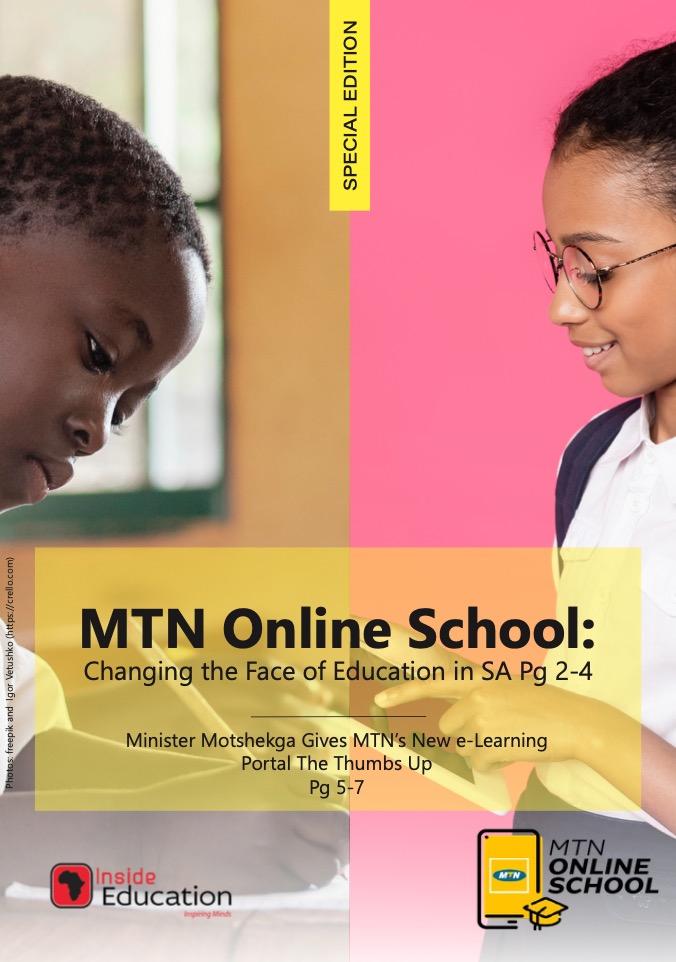By Hengiwe Dube
Every year, from 25 November to 10 December, the world observes 16 Days of Activism against Gender-Based Violence, a global campaign that aims to raise awareness, promote action and advocate for the end of violence against women and girls.
This initiative begins on the International Day for the Elimination of Violence against Women (25 November) and concludes on International Human Rights Day (10 December). It serves as a reminder that gender-based violence (GBV) is a prevalent global issue, and calls for a unified effort to address and prevent all forms of abuse, including those facilitated by modern technology.
This annual campaign is an opportunity to reflect on the many ways in which violence manifests in women’s lives and the steps that need to be taken to eliminate it. Although the focus often centres on physical violence, the rise of digital technologies has introduced new forms of abuse, particularly through online spaces. In Africa, where internet and mobile phone penetration has surged in recent years, women are increasingly vulnerable to violence facilitated by technology; this must be addressed as part of the broader fight against GBV.
Understanding technology-facilitated violence
Technology-facilitated violence refers to the use of digital tools – such as the internet, social media and mobile apps – to perpetrate harm, control or exploit individuals, especially women. As more women in Africa and across the globe gain access to smartphones and digital platforms, the risks associated with these technologies have escalated. What was once a tool for empowerment can now be misused as a weapon of abuse. This phenomenon includes a range of behaviours, from harassment and surveillance to exploitation and manipulation.
One of the most common forms of technology-facilitated violence is cyberstalking, where abusers use social media, messaging platforms and emails to harass or threaten women. This can range from constant messaging and threats to online campaigns designed to shame or control the victim. Another disturbing form of digital abuse is the non-consensual sharing of intimate images (including videos), often with the intent to humiliate or exert power over the victim. This form of abuse is especially devastating, as the spread of such content can have long-lasting effects on a woman’s personal and professional life.
Women also face the growing problem of online sexual harassment, where they are bombarded with unsolicited sexual messages, comments or explicit content across various digital platforms. The anonymity of the internet allows perpetrators to act without fear of being identified, making it difficult for women to escape this harassment. Doxxing, the malicious act of publishing private information such as home addresses or phone numbers online, is another form of abuse that puts women at great risk. By revealing personal details, abusers may incite others to further harass or physically harm their victims.
In some cases, digital domestic abuse occurs when a partner uses technology to control or monitor their significant other. This can involve tracking their partner’s location through mobile apps, accessing their personal messages and emails, or controlling their social media accounts. Financial abuse via technology is another emerging form of control, where abusers use digital platforms to restrict access to financial resources or manipulate spending, further trapping women in cycles of abuse.
The impact of technology-facilitated violence on women
The effects of technology-facilitated violence are far-reaching and have a profound impact on women’s mental, emotional and physical well-being. Constant harassment, surveillance and threats often result in psychological trauma, including anxiety, depression and post-traumatic stress disorder. Victims may feel constantly unsafe and isolated, as the abuse can follow them everywhere, both in the digital and physical realms.
Another significant impact of digital abuse is the damage to a woman’s reputation. When intimate content is shared without consent or when private information is exposed online, the consequences can be devastating. Women may lose their jobs, relationships and social standing. The public nature of digital platforms means that these actions can have enduring emotional and social repercussions, even after the abusive content has been taken down.
Physical safety is another significant concern. Technology can enable abusers to track their victims’ movements and access sensitive personal data, increasing the risk of physical harm. For example, location tracking apps can allow perpetrators to stalk their victims in real time, while doxxing can lead to real-world threats and violence.
Many women also face significant barriers to seeking help in cases of technology-facilitated violence. In some parts of Africa, there is limited access to resources for reporting digital abuse, and victims may fear not being taken seriously by authorities. Also, cultural factors, such as shame or fear of further victimisation, can prevent women from speaking out. The lack of comprehensive legal frameworks and the slow pace of technological literacy among members of law enforcement can further complicate efforts to seek justice.
Technology’s role in enabling GBV
Technology has created new avenues for GBV, largely due to its inherent features that allow for anonymity and global reach. This anonymity makes it difficult for victims to pinpoint the abuser, and for authorities to track and prosecute perpetrators. As a result, many forms of digital violence go unpunished.
Also, the global accessibility of the internet means that technology-facilitated violence can transcend national borders. Harmful content, such as explicit images or defamatory posts, can spread rapidly across social media platforms, causing widespread damage. The internet’s reach means that women in rural and urban areas alike are vulnerable to online abuse, and perpetrators can operate from anywhere in the world.
The responsibility of tech platforms in curbing digital violence is also a point of contention. Many tech companies have implemented reporting systems to address online harassment, but these measures are often inadequate or not effectively enforced. The lack of accountability from platforms that host abusive content or the failure to take action against perpetrators contribute to the persistence of technology facilitated violence. For example, social media platforms may not do enough to remove harmful content quickly enough or may fail to protect vulnerable users from ongoing abuse.
The African Commission’s resolution on digital violence
In 2022, the African Commission on Human and Peoples’ Rights adopted Resolution 522 on the Protection of Women Against Digital Violence in Africa, a groundbreaking move that directly addresses the growing prevalence of technology-facilitated violence on the continent. This resolution calls on African states to review and expand their legal frameworks to explicitly include digital violence within the broader category of GBV. This includes new provisions to criminalise cyberstalking, non-consensual sharing of intimate images and other ICT-related violations that disproportionately affect women. By recognising the unique threats posed by digital platforms, the resolution emphasises the need for robust legislative responses and urges states to protect women from all forms of digital abuse, ensuring that their rights are safeguarded both online and offline.
The resolution outlines a set of recommendations that address the root causes of digital violence and promote a safer online environment for women. These include the implementation of research and awareness campaigns, the promotion of digital literacy programmes to bridge the gender gap in technology, and the establishment of mandatory training for law enforcement and judiciary professionals on digital abuse. The African Commission also emphasises the importance of supporting women’s access to education and opportunities in the tech sector, empowering them to become part of the solution to online violence. States are urged to strengthen cooperation between service providers and law enforcement to improve evidence gathering and perpetrator identification, ensuring that digital violence does not go unpunished.
Legal and policy framework
While some African countries have taken important steps toward addressing technology-facilitated violence through national laws and regulations, there is still a significant gap in effectively combating digital abuse. In most cases, existing legal frameworks are outdated or insufficient to address the complexities of online GBV. In some legal systems, these issues are not explicitly covered, leaving victims with limited recourse.
To tackle this growing problem, legal protections for women in the digital space need to be enhanced so that digital violence is treated with the same seriousness as offline abuse. While some African countries have made progress with cybercrime laws aimed at protecting women from online abuse, the enforcement of these laws remains inconsistent. There is much to be done to ensure that victims have access to justice, that the legal framework evolves in response to emerging forms of digital violence, and that technology facilitated violence is addressed comprehensively and effectively across the continent.
The South African legal framework recognises the growing threat of technology-facilitated GBV and has begun to address this issue through both specific legislation and broader frameworks. For instance, the Cybercrimes Act (2020) criminalises several forms of online abuse that have a gendered impact, particularly on women. It addresses online threats such as cyberbullying, online harassment and the distribution of intimate images without consent. Section 16 on cyberstalking and cyberharassment criminalises the use of electronic communication to harass, intimidate or threaten another person. It recognises the harm that can be caused through digital platforms and aims to provide a legal framework to protect victims from online harassment. Section 3 addresses data interception by criminalising the unlawful and intentional interception of private data, such as emails, messages or intimate content. This provision is particularly relevant in cases of digital stalking, non-consensual sharing of intimate images and cyberharassment, where perpetrators may intercept or access sensitive information without consent to control, intimidate or blackmail victims. It applies to situations where private data is unlawfully obtained, stored or used for abusive purposes, making it an important legal tool for protecting individuals, particularly women, from digital exploitation.
Prevention and response strategies
The African Commission’s Resolution 522 marks a crucial step forward in recognising the intersection between GBV and the digital space. However, much more needs to be done at both national and international levels to fully protect women. While the digital realm offers immense opportunities for empowerment, it also exposes women to a variety of threats, which not only violate their privacy but also contribute to the erosion of their dignity, mental health and security. The continued expansion of digital platforms and tools requires urgent attention to ensure that legal frameworks and safeguards evolve to keep pace with these new forms of violence.
To this end, governments, tech companies, civil society organisations (CSOs) and international human rights mechanisms must take immediate and decisive action. The following key steps are necessary to ensure that women can navigate the digital world safely, free from the threat of violence.
Key action points:
a) Governments, tech companies and regulatory bodies must work together to hold tech platforms accountable for the content and interactions that occur on their systems, particularly in relation to digital violence. Governments and regulators should enforce regulations that require social media platforms to implement stronger content moderation policies, swiftly removing harmful content such as abusive messages, non-consensual intimate images and hate speech. Tech companies should adopt measures to address violations of user rights, including suspending or banning accounts engaged in harassment or cyberbullying. Without effective action, these platforms become breeding grounds for abuse.
b) Governments, judicial authorities, legislators and CSOs should collaborate to strengthen legal frameworks that specifically address digital violence. This includes passing comprehensive cybercrime laws that criminalise online abuse such as cyberstalking, online harassment and the non-consensual sharing of intimate images, and establishing clear legal recourse for victims, ensuring swift investigation and prosecution. Existing GBV laws should be updated to encompass online abuse, providing victims the same legal protection and access to justice as for physical violence. Robust legal frameworks are essential for holding perpetrators accountable but also for signalling to society that digital violence is as serious as any other form of abuse, highlighting the need for laws to evolve in response to the digital age.
c) Governments, CSOs, education institutions and tech companies should prioritise digital literacy programmes for women and girls to equip them with the skills and knowledge needed to navigate the digital world safely. These programmes should focus on educating women about safe online practices, data protection, recognising online threats and reporting digital abuse. They should also provide training on digital privacy, such as securing personal information and avoiding risks like phishing or identity theft. Collaboration with tech companies is key to offering women user-friendly tools that enhance their safety, such as privacy settings, blocking features and reporting mechanisms. Empowering women with digital literacy is essential for reducing their vulnerability to online abuse and enabling them to fully harness the opportunities of the digital space.
d) CSOs, governments, healthcare providers and tech companies should enhance support services for victims of digital violence by creating hotlines and online platforms where they can report abuse anonymously, and access legal and psychological support. Law enforcement agencies should be trained to investigate digital violence cases, with a focus on gathering digital evidence and understanding the challenges posed by online crimes. Victims of digital violence often feel isolated and unsupported. Providing access to comprehensive support services ensures that women can recover from the trauma of online abuse and seek justice in a supportive environment.
e) Law enforcement agencies also need targeted training to effectively investigate and handle cases of digital abuse, including gathering digital evidence and understanding the nuances of online crimes. Police, lawyers and judges must be equipped with the knowledge and tools necessary to support victims and ensure perpetrators are held accountable.
f) The African Union, United Nations and international NGOs should promote regional cooperation and advocate for harmonised policies to combat digital violence across Africa. This includes encouraging countries to align their digital violence laws with international human rights standards and regional frameworks like Resolution 522, supporting cross-border collaboration in prosecuting cybercrimes, and facilitating information sharing to track online abusers. Engaging with international NGOs will help raise awareness and create global networks of support for women facing digital violence. Digital violence often transcends borders, thus requiring collaboration between countries and international organisations.
GBV, in all its forms, must be eradicated. This includes strengthening legal frameworks, holding tech platforms accountable, empowering women through digital literacy and providing essential support services for victims. Governments, CSOs and international bodies must work together to create safer digital spaces, where women are free from harassment, abuse and exploitation. By aligning laws with international human rights standards, enhancing victim support and promoting regional cooperation, we can nurture an environment where women are protected and empowered online.
The fight against technology-facilitated violence is not just a women’s issue – it is a global issue that requires a united, comprehensive approach. Only through collective, sustained action can we ensure that women, both online and offline, are free from violence and discrimination, paving the way for a more equitable and just future.
Hlengiwe Dube is Project Manager: Expression, Information and Digital Rights Unit at the Centre for Human Rights at the University of Pretoria’s Faculty of Law
INSIDE EDUCATION










